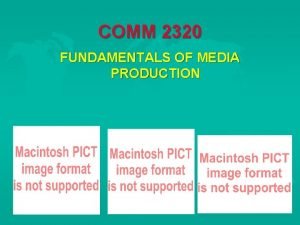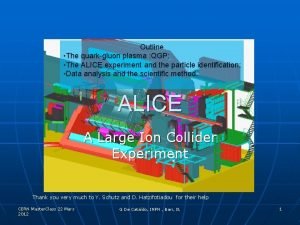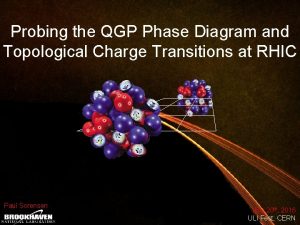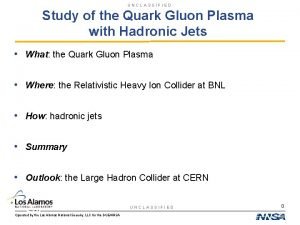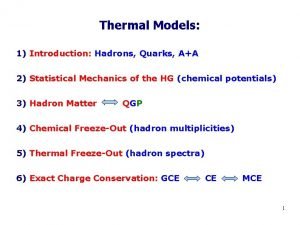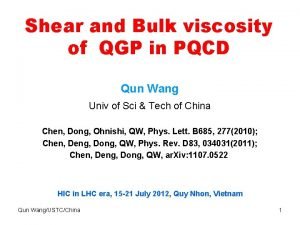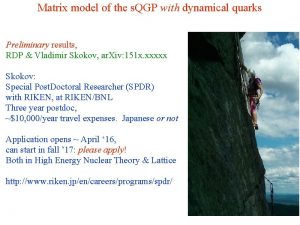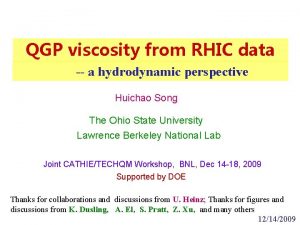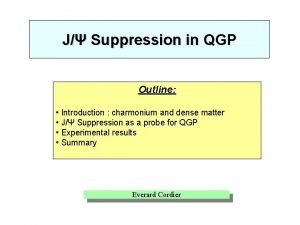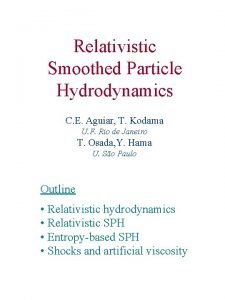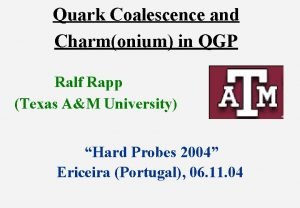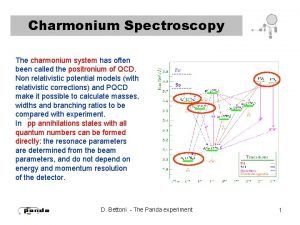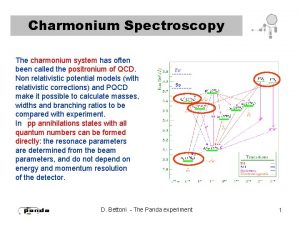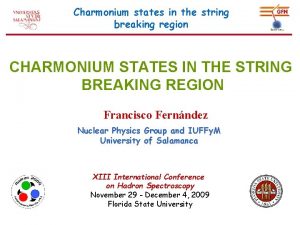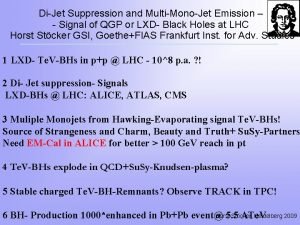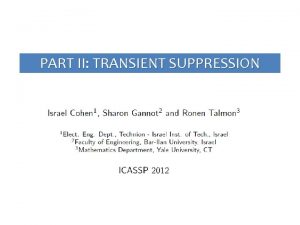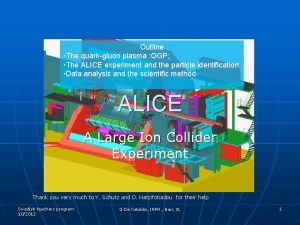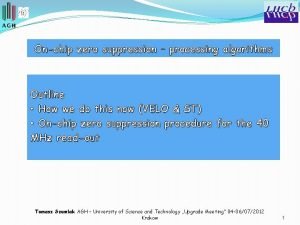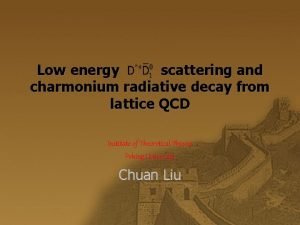J Suppression in QGP Outline Introduction charmonium and












- Slides: 12

J/Ψ Suppression in QGP Outline: • Introduction : charmonium and dense matter • J/Ψ Suppression as a probe for QGP • Experimental results • Summary Everard Cordier

Introduction : charmonium • J/Ψ (1 S) is a cc bound state m = 3. 097 Ge. V <r> ≈ 0. 4 fm • J/Ψ threshold production for p-p collision ≈ 15 Ge. V

Introduction : Heavy-ion collision • High-energy heavy-ion collision can create the QGP • Different ways around the critical point : high temperature or high density • Need observables to distinguish hadron medium from QGP : J/Ψ suppression ?

Why do we expect a suppression ? C C J/Ψ in vacuum J/Ψ in the QGP → Debye Screening of colour charge

Charmonium model and lattice QCD Find the temperature dependance of the screening radius • V(r) = σr – mαeff/r σ: string tension ( σ ≈ 0. 16 Ge. V 2 for isolated system, i. e T=0 ) π

J/Ψ suppression in QGP In 1986 Matsui and Satz proposed J/Ψ suppression as signature of the QGP • Can the J/Ψ escape from the production region before plasma formation ? • At what T does r. D(T) fall below r. J/ Ψ(T) ? • Are there competitive non-plasma J/Ψ suppression mechanisms ? • Could the J/Ψ suppression in the QGP be compensated in the transition or hadronization stage ? • Could enhanced non-resonant production of lepton pairs (“thermal dileptons”) prevent the observation of the J/Ψ ?

Measurement of charm and lepton/lepton pairs • Charmonium: lepton pairs J/Y e+e-, m+m. Y(2 S) e+e-, m+mcc J/Y + g Open charm: single lepton and lepton pairs Charm signal: single lepton pairs • J/Y has a large branching ratio (6%) to lepton pairs, and it is almost exclusively measured by lepton pair decay. Charmed mesons has a large leptonic branching ratio (D 0: 7 %, D+: 17%). Charm production can be measured indirectly by single lepton in 0. 5< pt<3 Ge. V/c (RHIC/PHENIX) and lepton pairs in 1<M<3 Ge. V (SPS/NA 50). – More direct measurement of D-meson reconstruction is difficult without a precision vertex detector


NA 50 Results

NA 50 Results

Experimental results • NA 50 observed anomalous suppression of J/Y in Pb+Pb collisions at 158 Ge. V, deviation from the nuclear absorption model • If J/Y suppression is due to QGP formation, almost all of initially produced J/Y should be suppressed at RHIC energy • PHENIX observed excess of single electron yield over the contribution from light meson decays and photon conversions

Summary • Quarkonium suppression has been observed at SPS • The gross features are consistent with the idea of colour charge screening, but : • It seems to be specific to the kinematic conditions in these experiments : the enhanced charm creation at RHIC and LHC may lead to an enhancement of the J/Ψ yield • Evidence of charmonium production by coalescence in QGP • No J/Ψ suppression observed at RHIC
